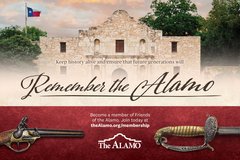During the Week of December 2 through December 6, the archaeological investigations associated with the architectural investigations opened two new units.
Archaeology Update — Investigating the Sites of 1995 Excavations
On the inside of the Church, located in the south transept, excavations began in Unit 2. On the outside of the Church, opposite the south wall and the location of Unit 2, Unit 1 was placed so when excavations are complete the architects will have an interior and exterior view of the portion of the south wall. Both of these units are located in areas that had been previously investigated in 1995.
The 1995 excavations were to allow for historic architects to place a steel plate in the foundation to help prevent the rising damp. In 1995, the entire south transept inside the Church was excavated to a certain depth to allow for the steel plate. On the exterior, the excavations appear to have been slightly deeper, and encompassed the entire exterior of the south transept wall, as well as a portion of the exterior of the east wall. Old photographs show that the excavated area was lined with plastic and a poultice was applied to the wall prior to being back filled.


The current excavations on the interior unit, Unit 2, quickly encountered the sand that was placed inside the Church after the previous excavations. Although the sand should not contain artifacts, the archaeologists are still screening the matrix to confirm. No artifacts have been recovered from the sand layers. They archaeologists expect that the sand should be approximately 11–15 inches deep before encountering soils that had not been excavated.
On the exterior of the Church, in Unit 1, photographs from the 1995 excavations show that an area larger than the current unit dimension was systematically excavated. The archaeologists were expecting to not encounter artifacts, as they assumed that the soils replaced at the end of the excavations would be the same soils from the area but had been screened and therefore considered culturally sterile. Rather, the current excavations have encountered a large quantity of artifacts.
There are two possible explanations for the current unit to contain artifacts: 1) the excavated soils were not screened before being replaced, or 2) soils containing artifacts from another location were replaced in this location. The archaeologists noted that the artifacts coming from each layer are mixed in context. Modern materials such as screws and nails were recovered alongside colonial ceramics, highly rusted metal, and construction related materials. An exciting find from these mixed soils consisted of a coin that exhibited a date of 1841. Although the date is visible, the rest of the coin appears worn.



Unit 3, also located on the exterior of the south wall of the Church, continued during the week. The hint of a trench that was uncovered during the previous week revealed another utility line that ran northwest to southeast within the unit. The excavations in the trench area produced a mixture of modern and historic artifacts. In the areas not part of the trench, the artifacts appeared to contain glass, metal, and ceramics that may be associated with a mid to late 19th century date.
Excavations are planned to continue in these units the next week.


